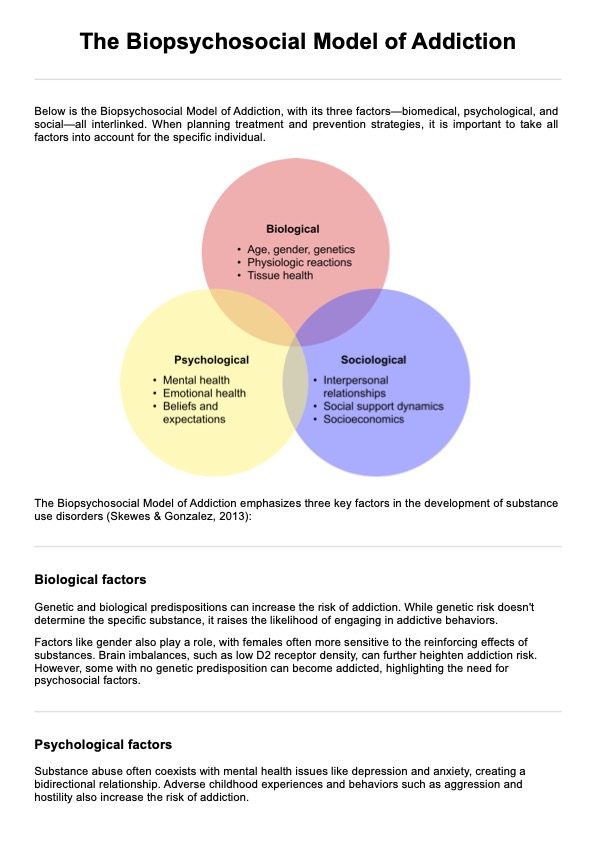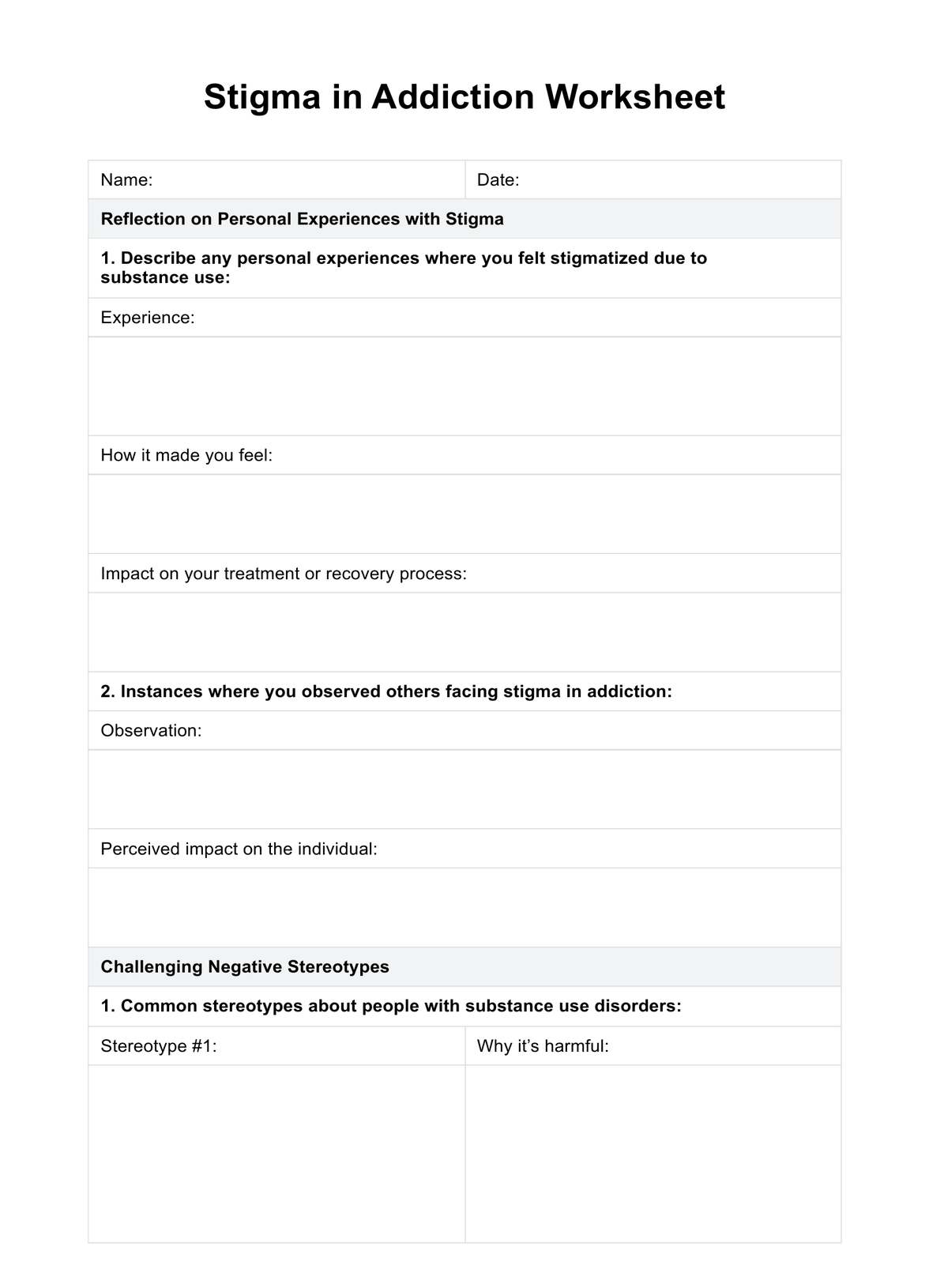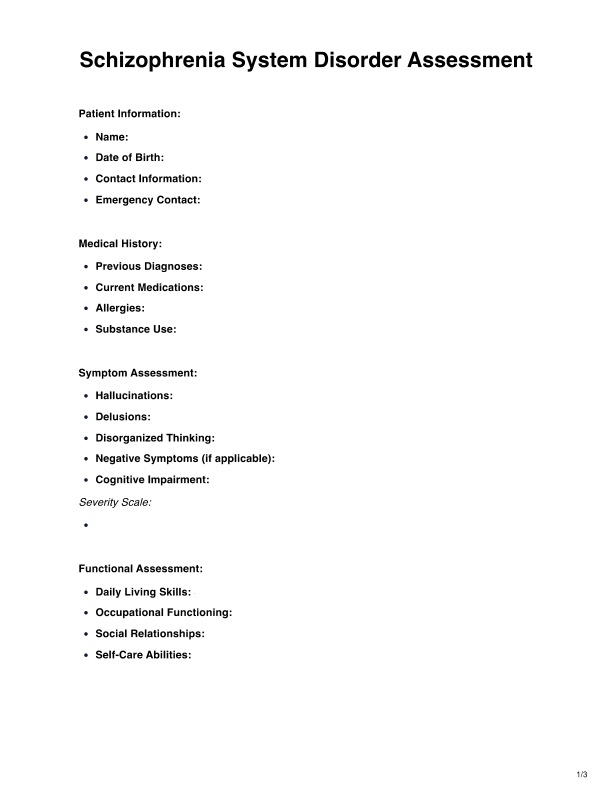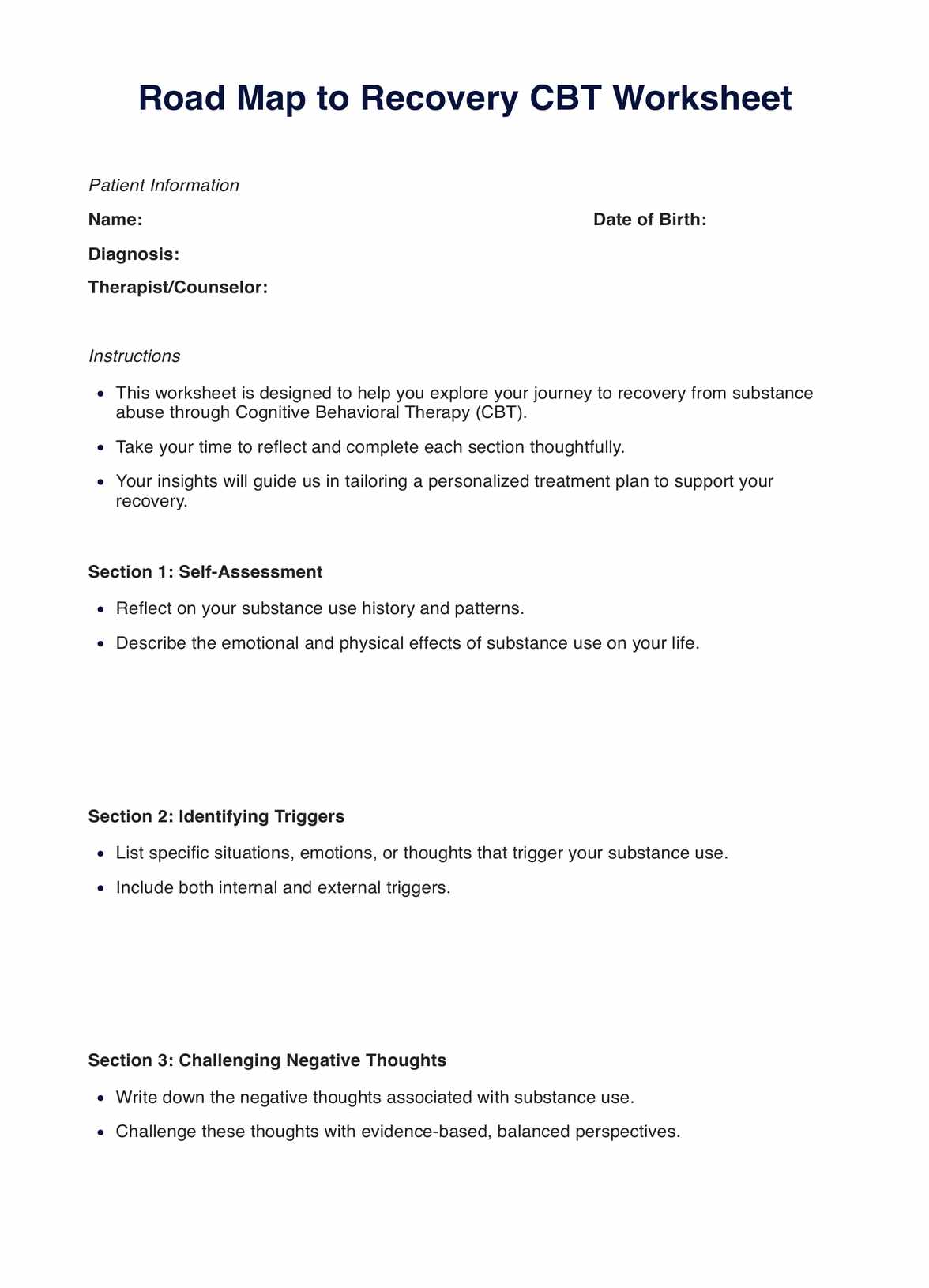Biopsychosocial Model of Addiction
Learn more about the Biopsychosocial Model of Addiction and its benefits of use. Download a free PDF here.


What is the Biopsychosocial Model of Addiction?
The Biopsychosocial Model of Addiction recognizes that there is not one single factor that can explain why some people are able to use substances without progressing to addiction. In contrast, others develop substance use disorder (Skewes & Gonzalez, 2013). Instead, the Biopsychosocial Model of Addiction focuses on the environmental, biological, psychological, psychological, cultural, cognitive, social, and genetic factors that interact to produce substance misuse among individuals (Skewes & Gonzalez, 2013).
This holistic approach to understanding the development and progression of substance use disorders emphasizes the need to address multiple factors in both prevention and treatment programs (Skewes & Gonzalez, 2013).
The recognition of individuals as multifaceted and intertwined people with a rich history involving jobs, environments, personal values, friends, family, and life experiences makes it easier to understand that although substance use disorder is the primary diagnosis, it does not occur in isolation (Florin & Trytek, n.d.). This provides a foundation for a better understanding of how harmful substance use emerged and what can be done to shift their unhealthy patterns (Florin & Trytek, n.d.). The holistic and well-rounded approach to understanding both the causes of addictive disorders and the best substance abuse treatment is seen in the Biopsychosocial Model of Addiction (Florin & Trytek, n.d.).
Biopsychosocial Model of Addiction Template
Biopsychosocial Model of Addiction Example
The Biopsychosocial Model of Addiction factors
The Biopsychosocial Model of Addiction factors focuses on three main factors as pivotal to the development of substance use disorders (Skewes & Gonzalez, 2013):
Biological factors
- In the correct environment, biological and genetic predispositions may increase the risk of substance use problems. However, a genetic predisposition towards addiction does not determine the specific substance they may be addicted to; instead, it is associated with an increased likelihood of engaging in addictive behaviors in general.
- Gender is also a factor that may influence addiction patterns; research has shown that females tend to respond more to reinforcing properties of substances compared to men. Hence, they may be more likely to develop drug abuse and dependency.
- Biological factors are related to imbalances of various chemicals in the brain, potentially causing a predisposition and increased risk of developing an addiction; for instance, those with low D2 receptor density are more likely to seek out pleasurable activities, including alcohol and drug use.
- It is important to note that there are cases in which someone with no genetic risk has become an addict, and individuals with high risk have not; hence, psychosocial variables are needed to explain occurrences.
Psychological factors
- Substance abuse is highly comorbid with mental illnesses, including affective disorders and other psychiatric conditions. In many cases, mental health issues, such as depression and anxiety, can both contribute to substance use and arise as a consequence of it, creating a bidirectional relationship between addiction and mental illness.
- There is evidence for greater risk in circumstances where the individual was subject to adverse childhood experiences. Along with deviant and antisocial behaviors such as aggression, hostility, and vandalism.
Social factors
- Many substance abusers have a history of antisocial behavior, nonconformity, deviance, acting out, impulsivity, and low self-esteem; however, these also can be the effects of substance misuse.
- In addition to genetic factors, addictive behaviors can be transmitted between generations in families due to modeling influence behavior, social norms, perceived attitude, and parent approval.
- Peers also heavily influence values, attitudes, and behavior, which is important in adolescence and adulthood.
- Ethnicity, culture, and socioeconomic status all influence addiction emerging for an individual.
Importance of understanding the model
The Biopsychosocial Model of Addiction offers a more comprehensive approach than the traditional biomedical model by addressing the biological, psychological, and social factors contributing to addiction (Skewes & Gonzalez, 2013). While the biomedical model focuses on addiction as a brain disease driven by genetic or biochemical abnormalities, it often overlooks the significant roles of mental health, trauma, and environmental influences (Skewes & Gonzalez, 2013).
In contrast, the biopsychosocial model emphasizes the interconnectedness of these factors, leading to more holistic and effective prevention and treatment strategies (Skewes & Gonzalez, 2013). By moving beyond reductionism, this model provides a balanced framework that better reflects the complexity of addiction and improves individuals' outcomes(Skewes & Gonzalez, 2013).
Understanding this is crucial to providing treatment plans and interventions representative of the individual and their needs. It is important that the support recovery process identifies the multifaceted reasons for the addiction, supporting them in living a healthy lifestyle without substance dependence.
References
Florin, J., & Trytek, J. (n.d.). Bio-Psycho-Social Issues – Foundations of Addiction Studies. Retrieved December 04, 2024, from https://cod.pressbooks.pub/addiction/chapter/chapter-five/
Skewes, M. C., & Gonzalez, V. M. (2013). The biopsychosocial model of addiction. Principles of addiction, 1, 61-70.
Commonly asked questions
The biomedical model focuses primarily on genetic and biochemical causes of addiction, while the biopsychosocial model considers mental health, environmental, and social influences in addition to biological factors.
Mental health conditions like depression and anxiety are often both causes and effects of substance abuse. Addressing these conditions is crucial for effective, long-term recovery.
Social factors such as family dynamics, peer influence, cultural norms, and socioeconomic status can significantly contribute to the development and maintenance of addiction, particularly in individuals with underlying mental health disorders or mental health problems. Dysfunctional family environments, unhealthy peer relationships, societal pressures, and financial instability can exacerbate the risk of addiction, often serving as coping mechanisms for emotional distress or unresolved mental health issues.







































































































